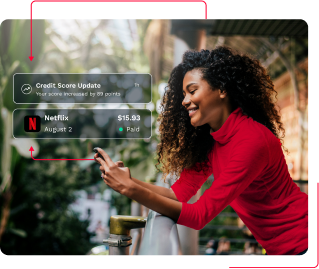
Moving to a new country can be an exciting life milestone. It can also come with a hefty to-do list – including getting your finances in order.
Establishing credit is an important part of laying roots as a new immigrant. Unfortunately, even if you have exceptional credit back home, it generally won’t transfer to the US.
This blog takes a closer look at how to build credit as a new immigrant and achieve your vision of the American dream.
In the United States, consumer credit reports have far-reaching impacts. They influence your approval odds for things like credit cards, auto loans, and home mortgages. Many employers and landlords even check your credit when you apply for jobs or housing.
Whether you plan to live in the US short-term or permanently, it’s important to learn how to build credit as a new immigrant.
Simply put, time is the biggest challenge in building credit as a new immigrant. It takes time to get your affairs in order – like obtaining the right documents, opening a US bank account, or securing steady employment.
It also takes time to build credit from scratch. Lenders pull your credit report when evaluating loan and credit applications. With no credit history, it’s harder to get approved for financial products to improve your credit score.
If you’re starting from square one, don’t despair. It’s possible (and important!) to build credit as a new immigrant.
You’ll usually need a US social security number (SSN) to apply for credit-building products. To receive an SSN, you must be a lawful permanent resident or naturalized citizen, have been granted asylum or refugee status, or have a US work visa.
You may have applied for an SSN as part of the immigration process in your home country. If you meet the requirements but don’t have an SSN, find application details here.
If you’re not eligible for an SSN, you may qualify for an Individual Taxpayer ID Number (ITIN). Consumers can use an ITIN instead of an SSN to apply for credit products. Follow this link to apply for an ITIN.
Most new immigrants are “credit invisible,” meaning they’ve never extended credit in the US. But with a little effort and patience, you can make great credit part of your new life.
Wondering how to build credit as a new immigrant? You have four main options:
Credit history from another country does not appear on US credit reports. However, in some cases, you can still leverage your foreign credit to obtain loans and credit cards in the US.
If you’re an American Express member back home, you may be eligible for the Global Transfer program. This program enables borrowers to transfer credit card accounts between select countries. American Express may also consider your current account history when you apply for a local card.
Nova Credit also helps immigrants leverage their foreign credit histories. Nova Credit translates credit reports from select countries – including the UK, Canada, Mexico, and India – into an equivalent report for lender partners in the US.
Secured credit cards help folks with limited credit history demonstrate responsible credit use. These cards reduce lender risk by requiring an up-front security deposit. The deposit is usually equal to the card’s credit limit.
There are some serious downsides to using a secured card. With low spending limits, it’s hard to achieve a good credit utilization ratio. Plus, secured card usually charge high interest rates, despite the fact that you’re spending your own deposit money.
Have a loved one in the US with a strong credit history? They can “share” it with you by becoming a cosigner or adding you as an authorized user.
A co-signer “guarantees” your debt, meaning they share responsibility for its repayment. Lenders take your co-signer’s credit history into account when you apply credit products. This doesn’t guarantee you’ll be approved, but it can substantially improve your chances.
A credit card holder can also add you as an authorized user. As an authorized user, the credit account will show up on your credit report. If the account remains in good standing, it can help improve your credit score.
Both options can help you build credit as a new immigrant. But it’s important to understand the potential risks. Here’s what you need to know before sharing credit.
Laying roots in a new country comes with a lot of logistics – and plenty of new bills. With tools like StellarFi, you can leverage your US expenses to build credit as a new immigrant.
Simply sign up and link payments like your rent, cell phone bill, and even subscriptions like Netflix and Amazon Prime. StellarFi operates behind the scenes and reports your positive repayment history to the national credit bureaus.
Immigrating can be complicated, but building credit in the US doesn’t have to be. Take a look around and become a StellarFi member today.
StellarFi (StellarFinance, Inc.) and its affiliates do not provide financial, tax, legal, or accounting advice. This material has been prepared for informational purposes only, and is not intended to provide, and should not be relied on for, tax, legal, or accounting advice. You should consult your own financial, tax, legal, and accounting advisors before engaging in any transaction. StellarFi receives a referral fee from the partners mentioned in this article.

With StellarFi, your bills are paid on time and reported to Experian® and Equifax®.